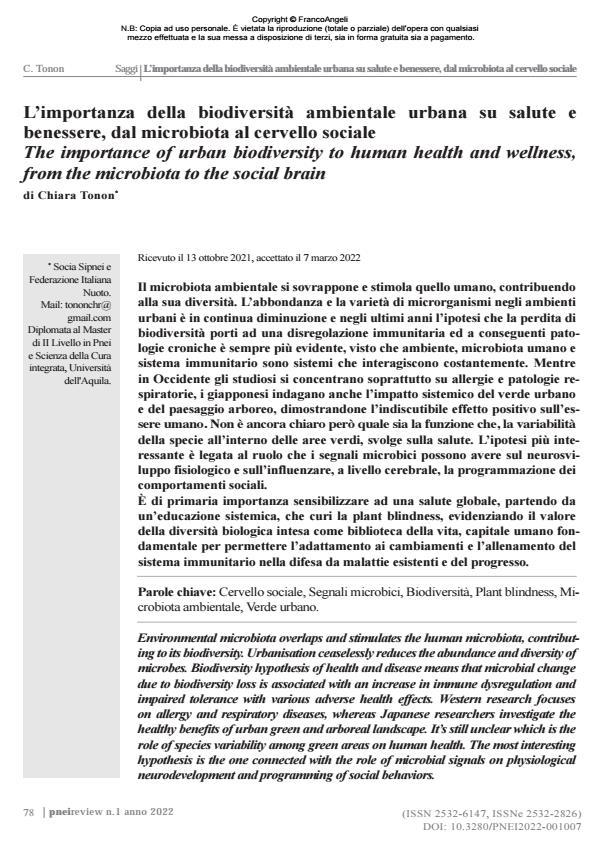The importance of urban biodiversity to human health and wellness, from the microbiota to the social brain
Journal title PNEI REVIEW
Author/s Chiara Tonon
Publishing Year 2022 Issue 2022/1
Language Italian Pages 16 P. 78-93 File size 519 KB
DOI 10.3280/PNEI2022-001007
DOI is like a bar code for intellectual property: to have more infomation
click here
Below, you can see the article first page
If you want to buy this article in PDF format, you can do it, following the instructions to buy download credits

FrancoAngeli is member of Publishers International Linking Association, Inc (PILA), a not-for-profit association which run the CrossRef service enabling links to and from online scholarly content.
Environmental microbiota overlaps and stimulates the human microbiota, contributing to its biodiversity. Urbanisation ceaselessly reduces the abundance and diversity of microbes. Biodiversity hypothesis of health and disease means that microbial change due to biodiversity loss is associated with an increase in immune dysregulation and impaired tolerance with various adverse health effects. Western research focuses on allergy and respiratory diseases, whereas Japanese researchers investigate the healthy benefits of urban green and arboreal landscape. It’s still unclear which is the role of species variability among green areas on human health. The most interesting hypothesis is the one connected with the role of microbial signals on physiological neurodevelopment and programming of social behaviors. Raising awareness on global health is of utmost importance by treating plant-blindness, starting from systemic education and highlighting the key role of biodiversity, seen as a life library and human resource to train the immune system to defend against modern diseases connected with progress and allow humans to adapt to changes.
Keywords: Social brain, Microbial signals, Biodiversity, Plant-blindness, Environmental Microbiota, Urban green.
Chiara Tonon, L’importanza della biodiversità ambientale urbana su salute e benessere, dal microbiota al cervello sociale in "PNEI REVIEW" 1/2022, pp 78-93, DOI: 10.3280/PNEI2022-001007